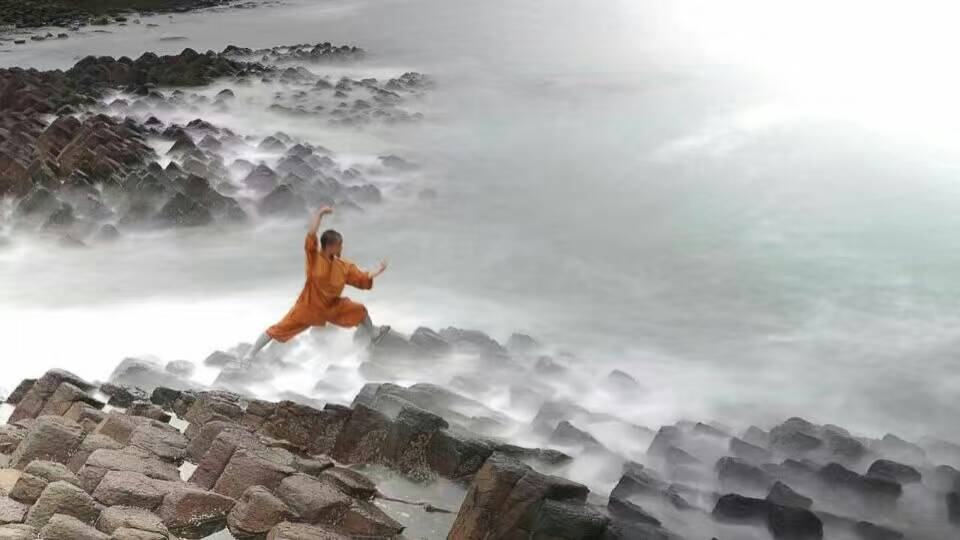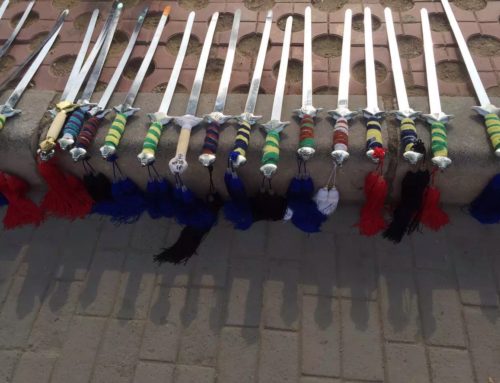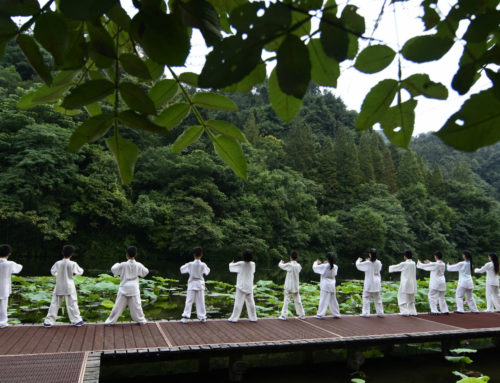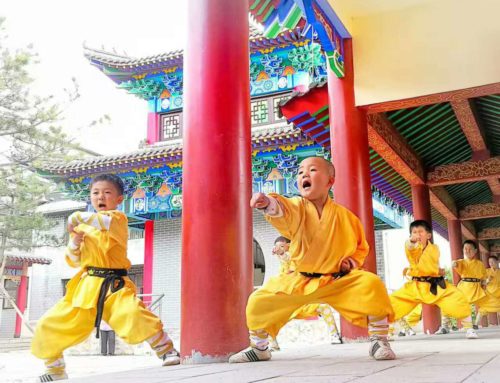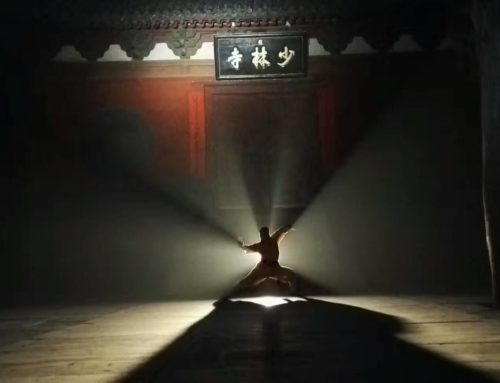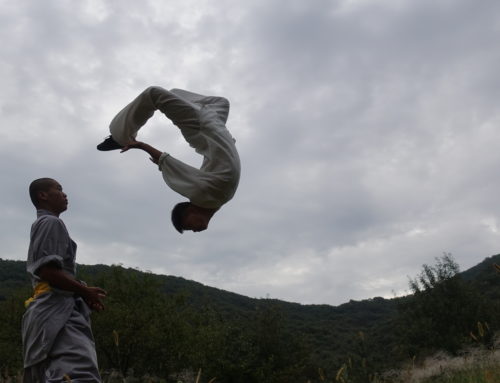Hello everyone !
Today, a Tai Ji Quan tutorial, we will learn the second sequence of Tai Ji Quan 24 of Yang Style.
Here is the link of the first article to learn the first sequence, you will also find a small introduction on this form: Tai Ji Quan 24 First part
13 . 右蹬脚 ( You Deng Jiao): Right Heel Kick

This Ji ben gong allows you to work on your balance and flexibility.
It is done in the same way as a direct kick in kung fu, with the difference that the support leg is slightly bent. He must also hit with the heel and tiptoe back to his body.
In Traditional Chinese Medicine (TCM), we say that this exercise will improve the capacity of your lungs and is considered a yin movement
14. 双峰贯耳 ( Shuang Feng Guan Er) Strike to Ears with Both Fists

This movement is in continuity with the previous one, once after hitting your heel strike, you go into a gong position up high then hit double inverted punches on the face.
In Traditional Chinese Medicine (TCM), we say that this exercise will improve your liver and is considered a yin movement
15. 转身左蹬脚 ( Zhuan Shen Zuo Deng Jiao) Turn Body and Left Heel Kick

As the name implies, one pivots by alternating the weight of one’s body on the left leg then on the right leg (support leg) once the rotation is completed to make the same kick as the movement 13 but of the left leg.
In Traditional Chinese Medicine (TCM), we say that this exercise will improve your spleen and is considered a yin movement
16. 左下势独立 ( Zuo Xia Shi Du Li) Left Lower Body and Stand on One Leg

The left kick is done, we bring the leg back, we move to the po po dr position and we go down the body like a snake and then put ourselves in the gong bu position (beware the difficulty is to keep the same height between the po po bu and the drunk gong, one must not do the elevator with one’s body)
Finally, you raise your right leg to move to the position of the li
In Traditional Chinese Medicine (TCM), we say that this exercise will improve your kidneys and is considered a yin movement
17. 右下势独立 ( You Xia Shi Du Li ) Right Lower Body and Stand on One Leg

It’s exactly the same movement as on the 16th, but on the opposite side
In Traditional Chinese Medicine (TCM), we say that this exercise will improve your kidneys and is considered a yin movement
18. 右左穿梭( You Zuo Chuan Suo )Shuttle Back and Forth
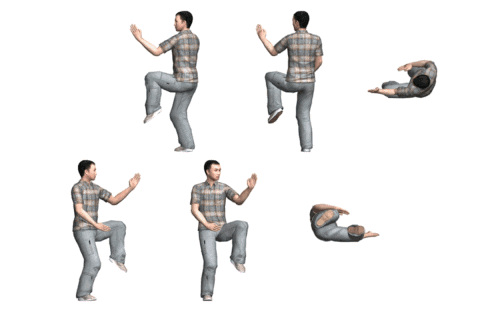
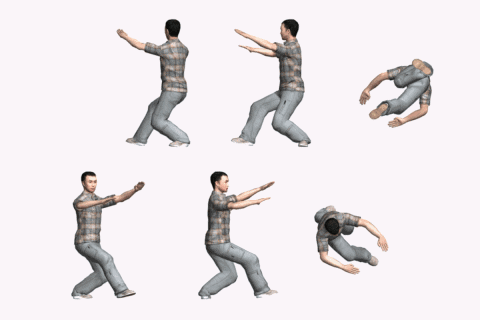
A very interesting exercise to work his tai Ji because we work with a “ball”
Keep the round shape of the balloon to “roll” to block and hit.
We can imagine a woman weaving in the era of ancient China
The movement will require a lot of work because it must be very fluid, very round, without any constraint
In Traditional Chinese Medicine (TCM), we say that this exercise will improve your bladder and is considered a yang movement
19. 海底针 ( Hai Di Zhen ) Needle at Sea Bottom

In the continuity of the movement, we imagine that the woman who wove lost her needle and that it must be picked up
All the weight of the body is on the right leg, we are in position Po Bu
In Traditional Chinese Medicine (TCM), we say that this exercise will improve your gallbladder and is considered a yang movement
20. 闪通臂 ( Shan tong Bi ) Fan Through Back

The left foot is lifted so that the hands meet and then we go drunk drunk so that the hands move apart as if we were opening a fan.
In Traditional Chinese Medicine (TCM), we say that this exercise will improve your spleen and is considered a yin movement
21. 转身搬拦锤 ( Zhuan Shen Ban Lan Chui ) Turn Body, Deflect, Parry, and Punch

One reverses one’s body weight to make a blocking while turning around then one goes in gong drunk to strike
Leg / arm coordination is relatively difficult during this exercise
In Traditional Chinese Medicine (TCM), we say that this exercise will improve your kidneys and is considered a yin movement
22.如封似闭 (Ru Feng Shi Bi) Appears Closed

In the Gong Bu position, we just pass the weight of the body on the back leg as if we were absorbing and then pass it on the front leg, while pushing
In Traditional Chinese Medicine (TCM), we say that this exercise will improve your small intestine and is considered a yang movement
23. 十字手 ( Shi Zi Shou ) Cross Hands

In this exercise, it is important to move your body weight on the back leg and then refocus while crossing your hands. When changing body weight, it is important to keep the pelvis at the same height
In Traditional Chinese Medicine (TCM), we say that this exercise will improve your large bowel and is considered a yang movement
24.收势 ( Shou Shi ) Closing

Exercise found in most forms of tai chi since it comes to finish your form
We just do the reverse of the first position to get back to where we started
In Traditional Chinese Medicine (TCM), we say that this exercise will improve your stomach and is considered a yang movement

